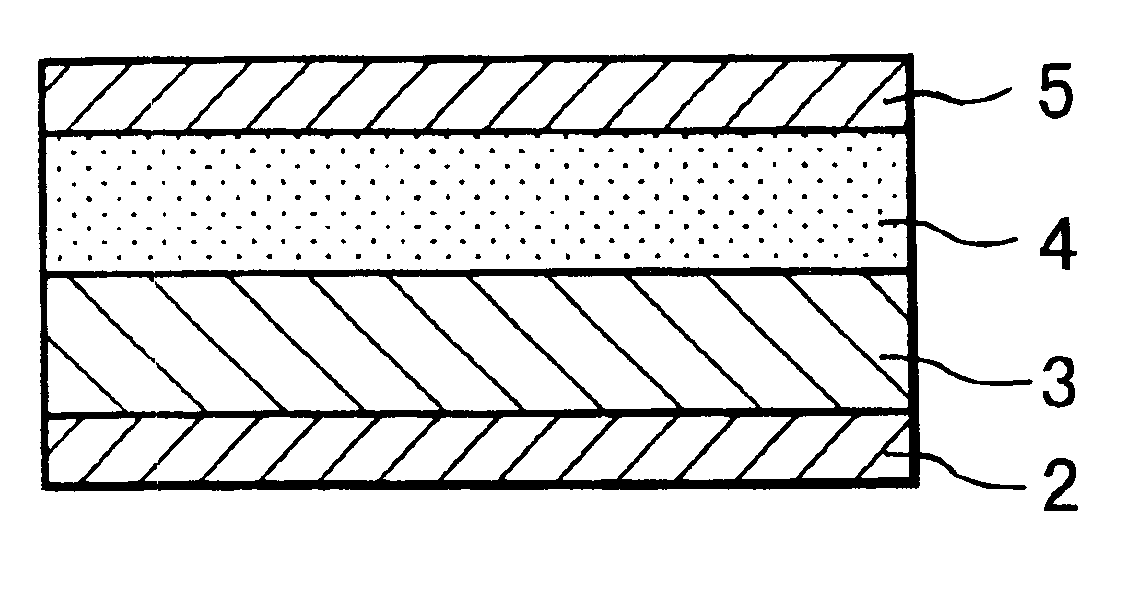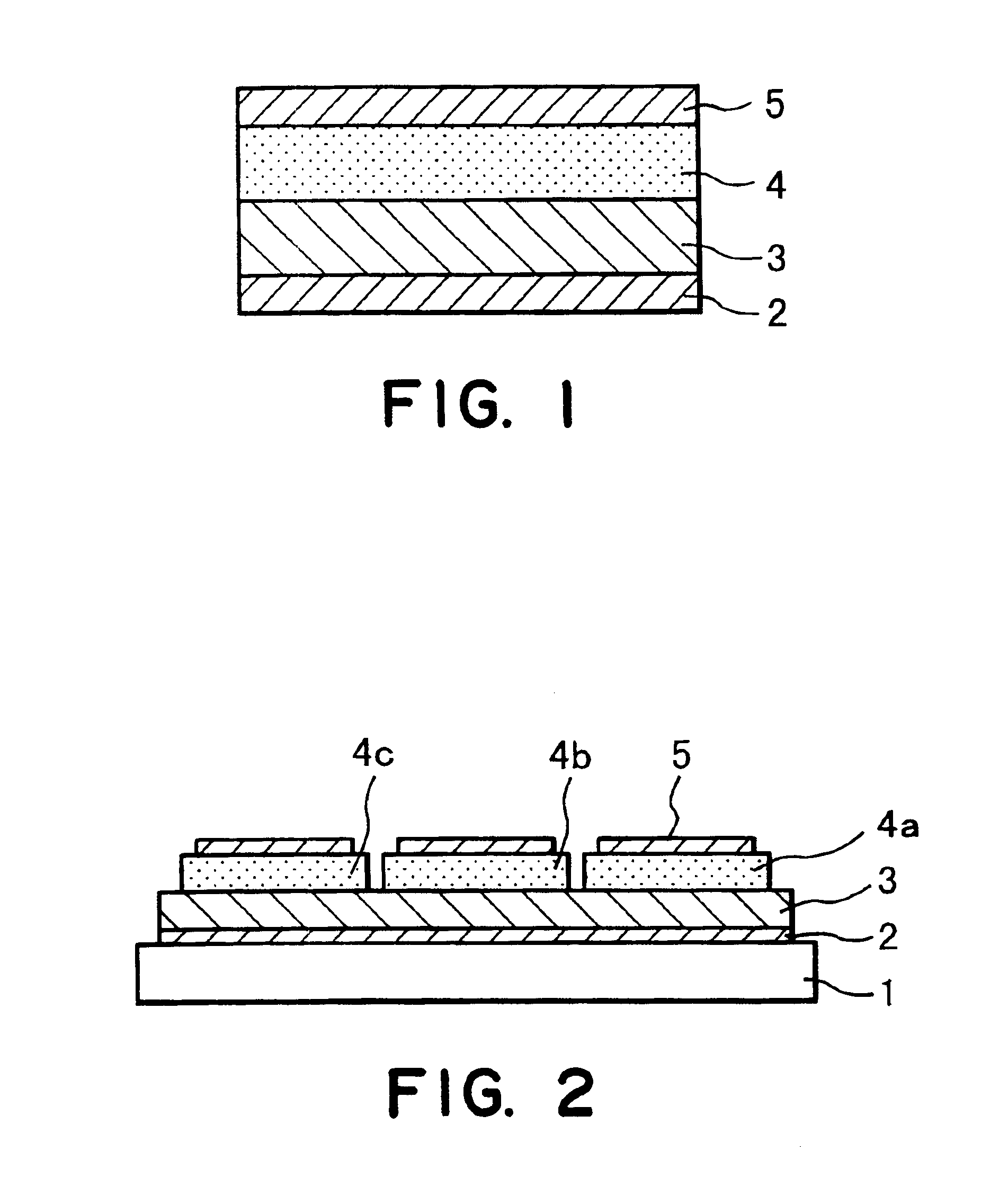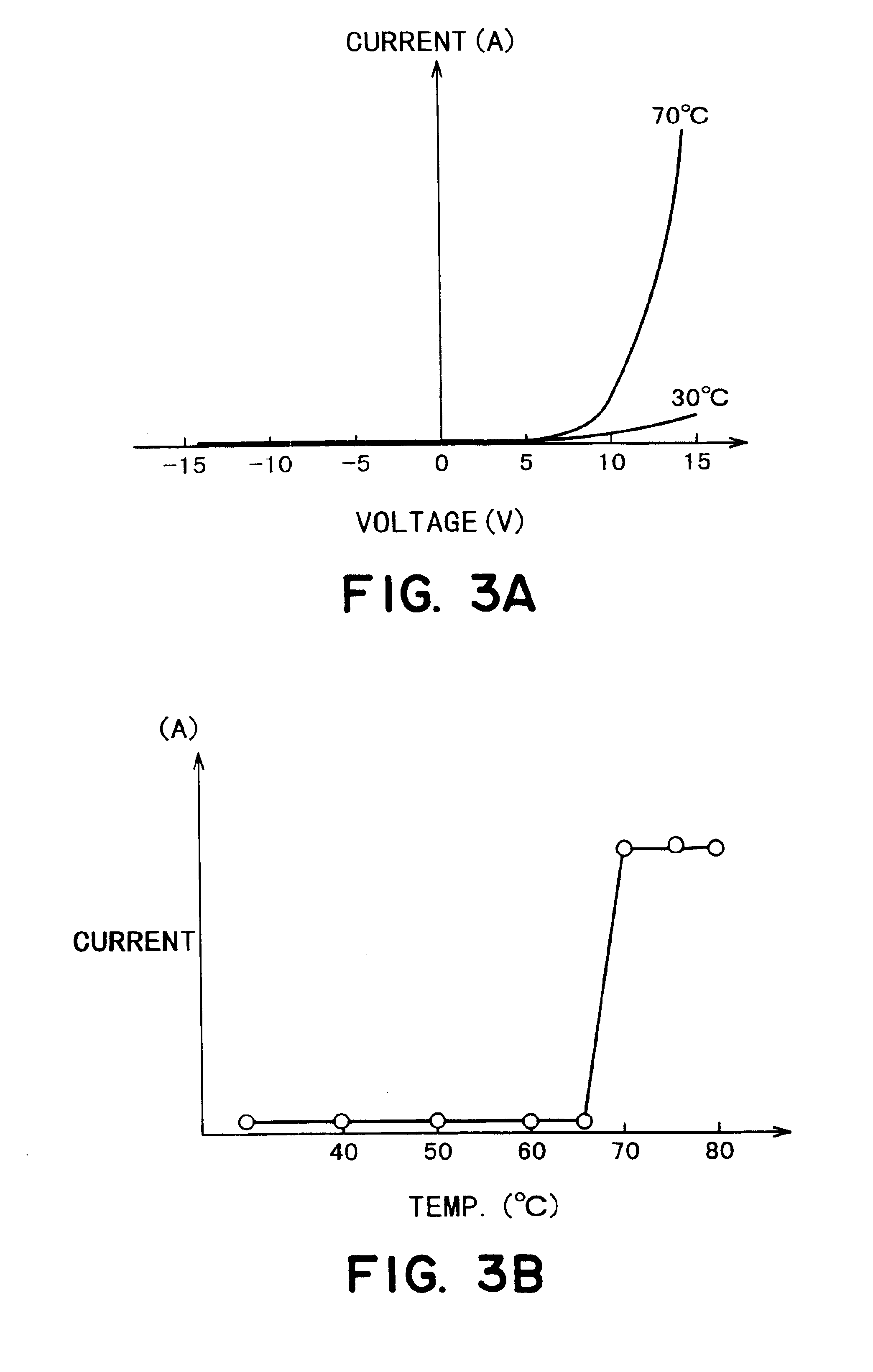Conductive organic compound device, conductive liquid crystal device, and organic electroluminescence device
a technology of organic compound and conductive liquid crystal, which is applied in the direction of discharge tube luminescnet screen, natural mineral layered products, instruments, etc., can solve the problems of short circuit between the electrodes, difficult to provide a thickness in excess of 1 m in view of productivity, and increase the total thickness of the organic layer including the conductive liquid crystal layer. , the effect of reducing power consumption
- Summary
- Abstract
- Description
- Claims
- Application Information
AI Technical Summary
Benefits of technology
Problems solved by technology
Method used
Image
Examples
first embodiment
According to the present invention, an (electro)conductive organic compound having a π-electron resonance structure in its molecule is used to form a carrier transporting layer, wherein the π-electron resonance structure plane of the conductive organic compound is aligned substantially parallel to an associated electrode surface, thereby improving the carrier injection performance from the electrode boundary. A conductive organic compound device, particularly a conductive liquid crystal device using a conductive liquid crystal as the conductive organic compound, including such a carrier transporting layer, can be applied to electronic devices, such as a photo-sensor, a photoconductor (for constituting, e.g., a photosensitive drum for copying machines), an organic semiconductor device (such as an organic TFT (thin film transistor)), a temperature sensor, and a spatial modulation device, and is particularly preferable to an organic EL device.
If a conductive liquid crystal is used as t...
example 1
An organic EL device having a sectional structure as shown in FIG. 2 was prepared. FIG. 2 shows a similar structure as in FIG. 1 but shows a glass substrate 1 supporting the anode 2 and luminance layers 4a, 4b and 4c of different colors instead of the single luminance layer 4 in FIG. 1.
More specifically, on a glass substrate 1 held at 200° C., a 70 nm-thick ITO film was formed as a hole-injecting anode 2 by sputtering with a target of In 90% and Sn 10% while flowing Ar gas at 200 sccm and O2 gas at 3 sccm. The ITO film showing a work function of approximately 4.35 eV was exposed to ultraviolet rays from a low-pressure mercury lamp to have an elevated work function of 4.60 eV.
The above-treated substrate 1, having an ITO film 2, was placed in a vacuum chamber held at a pressure below 2×10−5 torr, and an approximately 50 nm-thick layer of HHOT (hexabishexyloxytriphenylene) was formed on the ITO film 2 as a carrier transporting layer 3 by vacuum deposition at a rate of approximately 0.1...
example 2
On a glass substrate, a 70 nm-thick ITO film was formed by sputtering similarly as in Example 1 and then subjected to an oxygen-plasma treatment under the conditions of O2 gas flow rate of 200 sccm, a pressure of 10 m.torr, a power of 400 W and a treatment time of 4 min., whereby the ITO film was caused to have an elevated work function of approximately 4.93 eV.
The above-treated substrate having an ITO film was coated with a carrier transporting layer comprising a lamination of a 20 nm-thick HHOT layer and a 50 nm-thick HBOT layer. The HHOT layer and the HBOT layer were respectively formed by the resistance heating vacuum deposition method at a pressure of 1×10−5 torr and a deposition rate of approximately 0.1 mm / sec successively in the same vacuum chamber with an intermediate re-evacuation step. HBOT exhibited a mobility of 1×10−2 cm2 / V.sec at approximately 70° C. or below according to the time-of-flight method. HBOT is a discotic liquid causing a transition from crystal to discoti...
PUM
| Property | Measurement | Unit |
|---|---|---|
| Temperature | aaaaa | aaaaa |
| Temperature | aaaaa | aaaaa |
| Temperature | aaaaa | aaaaa |
Abstract
Description
Claims
Application Information
 Login to View More
Login to View More - R&D
- Intellectual Property
- Life Sciences
- Materials
- Tech Scout
- Unparalleled Data Quality
- Higher Quality Content
- 60% Fewer Hallucinations
Browse by: Latest US Patents, China's latest patents, Technical Efficacy Thesaurus, Application Domain, Technology Topic, Popular Technical Reports.
© 2025 PatSnap. All rights reserved.Legal|Privacy policy|Modern Slavery Act Transparency Statement|Sitemap|About US| Contact US: help@patsnap.com



